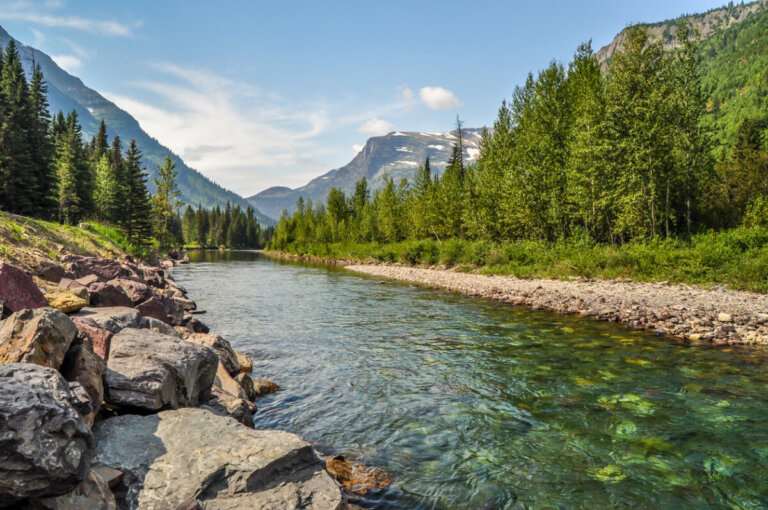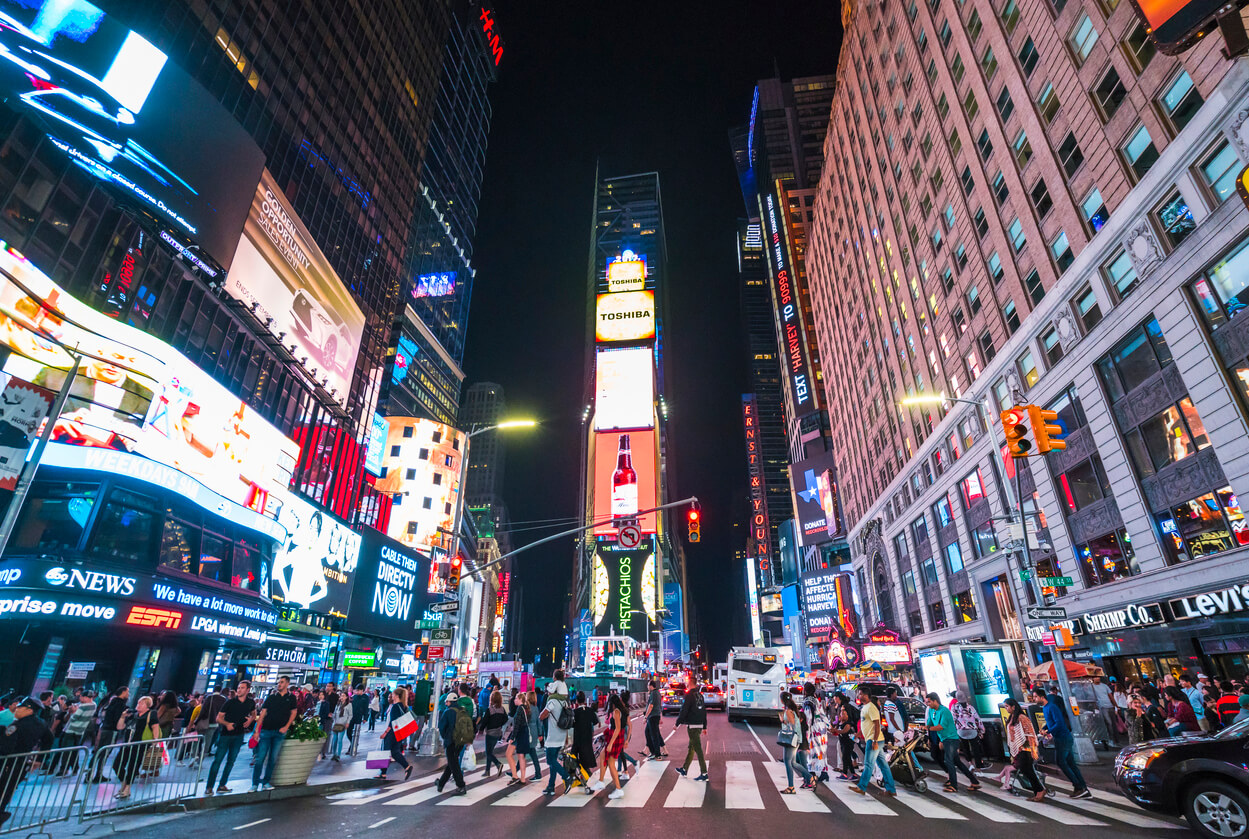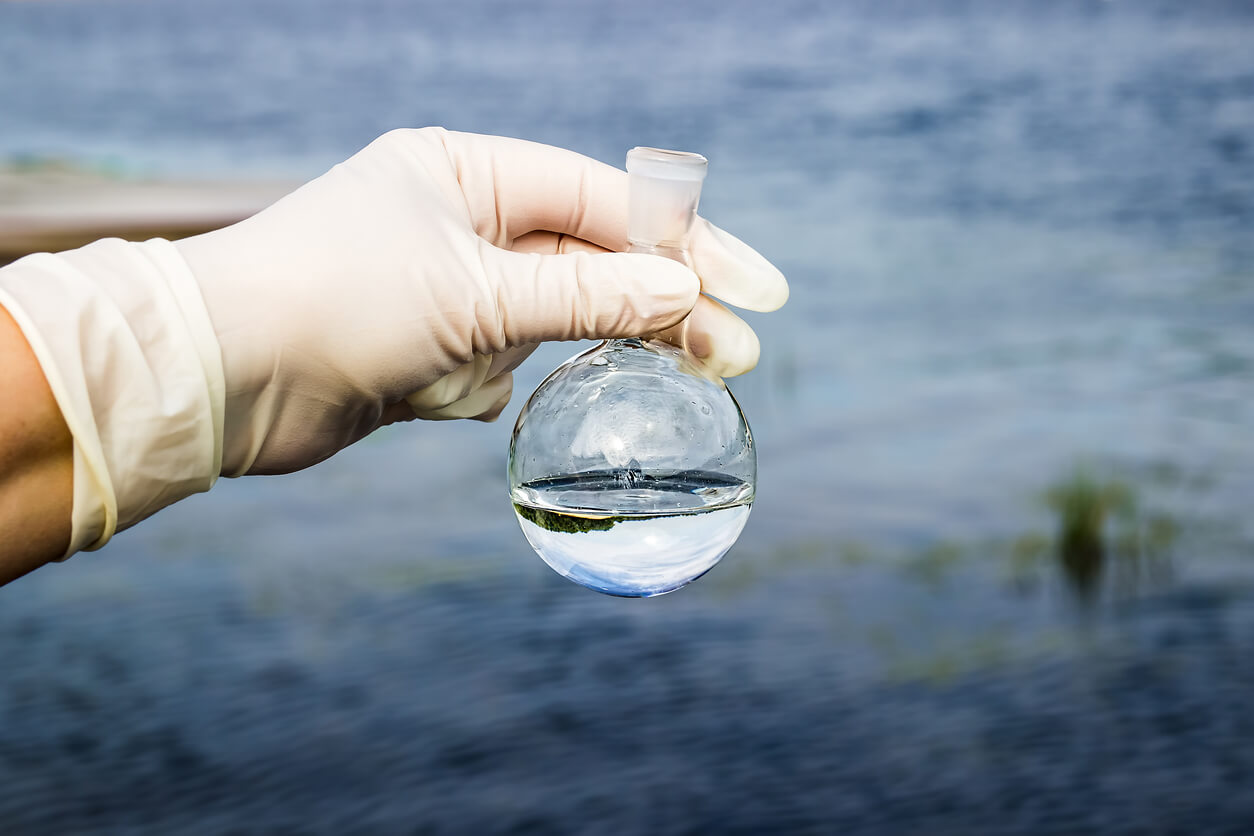River Water Is Getting Saltier: How Does It Affect Us?


Written and verified by the biologist Georgelin Espinoza Medina
Human beings are responsible for certain events on the planet, including the acceleration of global warming and climate change. Now, a recent study conducted in the United States indicates that river water is getting saltier, and has been for some years now, due to human activities. Are you aware of this phenomenon? Keep reading to learn more.
In recent decades, the salinization of river water has been studied, and analyses have identified the causes and impacts. The consequences of this phenomenon include altered ecosystem balance, reduced soil fertility, and increased costs for drinking water treatment.
Here’s a closer look at this scenario, with all the scientific advances and forecasts for the years to come.
The detection of the causes of freshwater salinization in the United States
In September 2023, a group of experts from the University of Texas and Syracuse published a study in the journal Science of the Total Environment in which they explained the procedure for analyzing river waters from rural and urban environments in the United States. In this regard, they compiled dissolved sodium and alkalinity values, to relate them to different properties:
- Chemical
- Geological
- Hydrological
- Climatological
- Land use and land cover
The study was carried out with the purpose of linking the changes in the values analyzed and predicting their possible causes.
In total, there were 226 monitoring sites, with which they built machine learning models. These are intelligent files trained to identify certain patterns in order to provide information and predictions.
Why river water is getting saltier

Researchers’ findings aren’t encouraging: River and stream water is getting saltier over time, thanks to human activities. Among the main reasons involved in these changes, we have the following:
- Urbanization
- Increase in population density
- Increase in impervious surfaces
Previous studies, such as the one published in the PNAS journal in 2018, obtained similar results, attributed to human activities. In particular, they make mention of the use of salts to de-ice roads and other outdoor surfaces in winter, as well as the effects of human-accelerated erosion.
The impact of anthropogenic activities is also concerning. Among these, the following are of particular concern:
- Industry
- Transportation
- Agriculture
- Resource extraction
These sectors contribute different amounts of salts to the environment. In addition, acid rain corrodes infrastructures, construction sites, and various objects in general, which adds more salts to the water of rivers and streams.
Climate change– accentuated by man in recent years – is another cause, as it increases the temperatures of water bodies. As a result, evaporation increases, and the concentration of salts in the water rises. The same happens in regions with less rainfall because there’s less dilution of the salts present in rivers and streams.
The consequences of saltier rivers

The phenomenon of saltier “fresh” water over the years is alarming in that it leads to ecosystem disruptions, with major impacts on biodiversity and drinking water services, human health, and the world’s economy. Let us look at these aspects in more detail.
Environmental implications
One of the most explicit impacts of river water salinization is on biodiversity. Many freshwater plant and animal species can’t tolerate changes in the salt composition of their environment, which affects their survival.
In addition, different types of salts influence the toxicity to aquatic organisms. In view of this, research has been conducted on various specimens such as the following:
- Algae
- Fish
- Amphibians
- Insects
- Mussels
For example, the viability of mussel larvae Anadonta anatina is affected by the increasing salinity of their environment.
With these impacts on various aquatic species, the balance of the ecosystem in general is also altered. This is because the loss of key organisms affects the food chains of the environment.
The impacts on drinking water and human health
Increased salinity in freshwater bodies has direct and indirect consequences for humans, who use these resources for drinking water supplies, as well as for agricultural and industrial use.
On the one hand, salts reduce soil fertility and cause damage to crops. On the other hand, they can be responsible for the release of other pollutants, as they increase the leaching of metals from pipes carrying drinking water. Consequently, they become a problem that affects people’s health.
Also, excess salts in drinking water can pose a risk to individuals who have salt restrictions in their diets. This is especially true for people suffering from hypertension or those undergoing kidney dialysis.
Economic impacts
The salinization of rivers and streams also represents increased monetary costs to the agriculture industry due to impacts on crops that decrease yields. For example, in California, agricultural damage due to water salinization costs billions of dollars annually.
It also results in additional economic costs for drinking water treatment. Changes in the salt concentration of freshwater increase the corrosion of pipes used to transport the vital liquid. In addition, if a natural source of drinking water is no longer suitable due to the aforementioned issue, it’s necessary to invest in new alternatives to supply the services.
In addition to this, there are other economic costs caused by the following factors:
- Automobiles
- Corrosion of infrastructure and pipelines
- Industrial tools and household appliances
In addition, the social impact derived from the displacement of people due to reduced access to drinking water and other related services must also be considered.
A holistic approach to the problem of river water getting saltier
Predictions about the problem of freshwater salinization aren’t good. The authors of a publication reported in the journal Philosophical Transactions of the Royal Society B estimate that, by the end of this century, salt values will increase in at least 50% of U.S. rivers and streams. This scenario could extend to other parts of the world.
Undoubtedly, this problem is aggravated by the lack of monitoring and scientific research. This variable is compounded by the lack of knowledge of the risks among the population and governmental figures.
Given this scenario, it’s essential to protect the global freshwater heritage by generating data that provide information on the problem. Likewise, its dissemination is required to establish regulatory actions and promote appropriate management strategies.
Finally, strategies are needed to reduce the consequences of freshwater salinization. To achieve this, a holistic approach is essential to balance costs and benefits, not only for the environment and its biodiversity but also for society and the economy.
Human beings are responsible for certain events on the planet, including the acceleration of global warming and climate change. Now, a recent study conducted in the United States indicates that river water is getting saltier, and has been for some years now, due to human activities. Are you aware of this phenomenon? Keep reading to learn more.
In recent decades, the salinization of river water has been studied, and analyses have identified the causes and impacts. The consequences of this phenomenon include altered ecosystem balance, reduced soil fertility, and increased costs for drinking water treatment.
Here’s a closer look at this scenario, with all the scientific advances and forecasts for the years to come.
The detection of the causes of freshwater salinization in the United States
In September 2023, a group of experts from the University of Texas and Syracuse published a study in the journal Science of the Total Environment in which they explained the procedure for analyzing river waters from rural and urban environments in the United States. In this regard, they compiled dissolved sodium and alkalinity values, to relate them to different properties:
- Chemical
- Geological
- Hydrological
- Climatological
- Land use and land cover
The study was carried out with the purpose of linking the changes in the values analyzed and predicting their possible causes.
In total, there were 226 monitoring sites, with which they built machine learning models. These are intelligent files trained to identify certain patterns in order to provide information and predictions.
Why river water is getting saltier

Researchers’ findings aren’t encouraging: River and stream water is getting saltier over time, thanks to human activities. Among the main reasons involved in these changes, we have the following:
- Urbanization
- Increase in population density
- Increase in impervious surfaces
Previous studies, such as the one published in the PNAS journal in 2018, obtained similar results, attributed to human activities. In particular, they make mention of the use of salts to de-ice roads and other outdoor surfaces in winter, as well as the effects of human-accelerated erosion.
The impact of anthropogenic activities is also concerning. Among these, the following are of particular concern:
- Industry
- Transportation
- Agriculture
- Resource extraction
These sectors contribute different amounts of salts to the environment. In addition, acid rain corrodes infrastructures, construction sites, and various objects in general, which adds more salts to the water of rivers and streams.
Climate change– accentuated by man in recent years – is another cause, as it increases the temperatures of water bodies. As a result, evaporation increases, and the concentration of salts in the water rises. The same happens in regions with less rainfall because there’s less dilution of the salts present in rivers and streams.
The consequences of saltier rivers

The phenomenon of saltier “fresh” water over the years is alarming in that it leads to ecosystem disruptions, with major impacts on biodiversity and drinking water services, human health, and the world’s economy. Let us look at these aspects in more detail.
Environmental implications
One of the most explicit impacts of river water salinization is on biodiversity. Many freshwater plant and animal species can’t tolerate changes in the salt composition of their environment, which affects their survival.
In addition, different types of salts influence the toxicity to aquatic organisms. In view of this, research has been conducted on various specimens such as the following:
- Algae
- Fish
- Amphibians
- Insects
- Mussels
For example, the viability of mussel larvae Anadonta anatina is affected by the increasing salinity of their environment.
With these impacts on various aquatic species, the balance of the ecosystem in general is also altered. This is because the loss of key organisms affects the food chains of the environment.
The impacts on drinking water and human health
Increased salinity in freshwater bodies has direct and indirect consequences for humans, who use these resources for drinking water supplies, as well as for agricultural and industrial use.
On the one hand, salts reduce soil fertility and cause damage to crops. On the other hand, they can be responsible for the release of other pollutants, as they increase the leaching of metals from pipes carrying drinking water. Consequently, they become a problem that affects people’s health.
Also, excess salts in drinking water can pose a risk to individuals who have salt restrictions in their diets. This is especially true for people suffering from hypertension or those undergoing kidney dialysis.
Economic impacts
The salinization of rivers and streams also represents increased monetary costs to the agriculture industry due to impacts on crops that decrease yields. For example, in California, agricultural damage due to water salinization costs billions of dollars annually.
It also results in additional economic costs for drinking water treatment. Changes in the salt concentration of freshwater increase the corrosion of pipes used to transport the vital liquid. In addition, if a natural source of drinking water is no longer suitable due to the aforementioned issue, it’s necessary to invest in new alternatives to supply the services.
In addition to this, there are other economic costs caused by the following factors:
- Automobiles
- Corrosion of infrastructure and pipelines
- Industrial tools and household appliances
In addition, the social impact derived from the displacement of people due to reduced access to drinking water and other related services must also be considered.
A holistic approach to the problem of river water getting saltier
Predictions about the problem of freshwater salinization aren’t good. The authors of a publication reported in the journal Philosophical Transactions of the Royal Society B estimate that, by the end of this century, salt values will increase in at least 50% of U.S. rivers and streams. This scenario could extend to other parts of the world.
Undoubtedly, this problem is aggravated by the lack of monitoring and scientific research. This variable is compounded by the lack of knowledge of the risks among the population and governmental figures.
Given this scenario, it’s essential to protect the global freshwater heritage by generating data that provide information on the problem. Likewise, its dissemination is required to establish regulatory actions and promote appropriate management strategies.
Finally, strategies are needed to reduce the consequences of freshwater salinization. To achieve this, a holistic approach is essential to balance costs and benefits, not only for the environment and its biodiversity but also for society and the economy.
All cited sources were thoroughly reviewed by our team to ensure their quality, reliability, currency, and validity. The bibliography of this article was considered reliable and of academic or scientific accuracy.
- Beibei E., Zhang, S., Driscoll, C., & Wen, T. (2023). Human and natural impacts on the U.S. freshwater salinization and alkalinization: A machine learning approach. Science of the Total Environment, 889, 164138. https://www.sciencedirect.com/science/article/abs/pii/S0048969723027596
- Beggel, S., & Geist, J. (2015). Acute effects of salinity exposure on glochidia viability and host infection of the freshwater mussel Anodonta anatina (Linnaeus, 1758). Science of the Total Environment, 502, 659-665. https://www.sciencedirect.com/science/article/abs/pii/S0048969714013898
- Jackson, J., & Funk, D. (2019). Temperature affects acute mayfly responses to elevated salinity: implications for toxicity of road de-icing salts. Philosophycal Transactions of the Royal Society B, 374, 20180081. https://royalsocietypublishing.org/doi/10.1098/rstb.2018.0081
- Kaushal, S., Likens G., Pace, M. Utz, R. Haq, S., Gorman, J., & Grese, M. (2018). Freshwater salinization syndrome on a continental scale. PNAS, 114(4), E574-E583. https://www.pnas.org/doi/10.1073/pnas.1711234115
- Olson, J. (2019). Predicting combined effects of land use and climate change on river and stream salinity. Philosophycal Transactions of the Royal Society B, 374. https://royalsocietypublishing.org/doi/10.1098/rstb.2018.0005
- Schuler, M., Cañedo, M., Hintz, W.,Dyack, B., Birky,S., & Relyea,R. (2018). Regulations are needed to protect freshwater ecosystems from salinization. Philosophycal Transactions of the Royal Society B, 374, 20180019. https://royalsocietypublishing.org/doi/10.1098/rstb.2018.0019
- Vernimmen, T. (2018). Freshwater is getting saltier, threatening people and wildlife. Scientific American. Consultado el 24 de septiembre de 2023 https://www.scientificamerican.com/article/freshwater-is-getting-saltier-threatening-people-and-wildlife/
This text is provided for informational purposes only and does not replace consultation with a professional. If in doubt, consult your specialist.








